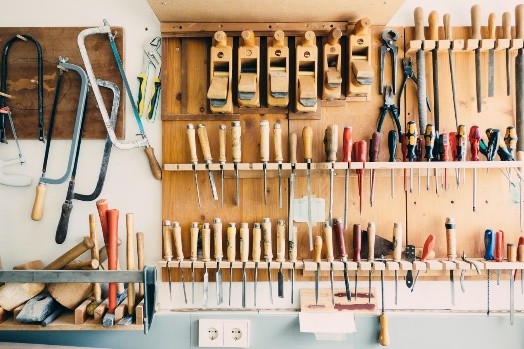

Feb. 13, 2023
For many people, woodworking is a relaxing and satisfying activity, or even a lifelong hobby. Woodworking DIY includes many projects. In addition to making cabinets, chairs and various home furnishings, there is also the making of carvings, picture frames and other works of art.
Cutting, shaping and joining techniques have evolved over the years, but the most basic woodworking knowledge remains the same. Even as we have better and more efficient power tools, there is still no substitute for hand woodworking.
In this guide, we'll explain some of the things to look for in woodworking for beginners.
Woodworking is the craft of using wood to make decorative or functional items. Although there are many projects in the construction industry that use wood, they are not part of the scope of our discussion today.
Woodworking involves two elements: wood as a raw material and a variety of tools for cutting, shaping and joining. Woodworking requires attention to detail, patience and even dedication. The skill of woodworking often takes many years of practice to reach the level of a master. But don't worry, beginners can also make a variety of high-quality wood crafts and have fun doing so.

Whether as a hobby or a profession, woodworking has psychological, social and economic benefits.
-Hone your creative skills. Woodworking allows you to embody your imagination in the real world, boosting your self-confidence and self-worth.
-Train your mind. Woodworking is also a mental endeavor. It uses math and even physics, which helps keep your mind agile.
-Relieve stress. Woodworking is a relaxing job. It helps relieve anxiety and lift depression.
-Promote new friendships. As a very popular hobby, woodworking can certainly expand the scope of friendships. Carpenters often organize work communities to share tools or work.
-Save money. When you can make your own, you don't have to buy expensive wooden furniture and accessories.
The different types of woodworking refer to different styles of work. Some of them are related to architecture and some are purely artistic.
-Furniture making. Woodworkers can make furniture such as cabinets, tables and chairs, and shelves. This often involves some large projects and requires a variety of craft skills.
-Wood carving. Wood carving is primarily an artistic activity and usually does not involve too complex a process or tools. Using chisels, mallets, and occasionally power tools, wood carvers create statues and figurines, decorative forms, and sometimes utilitarian items such as bowls and other containers.
-Wood turning. A lathe is a tool that rotates wood on a horizontal path for more precise and intricate shaping. As a result of the rotation, the wood that has been turned usually has a round shape. This process can produce bowls, vases and cups, shaped legs for chairs and tables, and decorative railings.
-Marquetry: Also known as wood inlay, marquetry is the art of making intricate designs from thin pieces of wood and inlaying them on other surfaces. Marquetry artists typically use a scroll saw to cut geometric and floral inlay patterns.
 A complete woodworking shop has a variety of cutting, shaping and joining tools. But when you're just starting out, you'll only need a few essentials, including.
A complete woodworking shop has a variety of cutting, shaping and joining tools. But when you're just starting out, you'll only need a few essentials, including.
-Tape measure. Commonly used to determine the length and width of the wood to be cut.
-Handsaw. The most traditional cutting tool. Better control than a chainsaw for jobs that require precise cuts.
-Clamps. Clamps hold the work in place for accurate cutting and gluing.
-Table saw. Professionals may have a high-powered shop saw, but all you need is a portable table saw.
-Jig saw. Use a jigsaw when you need to cut curves.
-Sander. There are many types of sanders available. For beginners, choose a random orbital sander.
Latest Post
SINOTOOLS Showcases Popular Hand Tools at the 138th Canton Fair
SINOTOOLS successfully participated in the 138th Canton Fair, showcasing high-quality hand tools and connecting with global clients. Booth No. 13.1H27, Guangzhou, China.
Oct. 21, 2025
Reflecting on Our Journey at Japan DIY Homecenter Show 2025
From August 21st to 23rd, our team had the pleasure of attending the Japan DIY Homecenter Show 2025, held in Chiba, Japan.
Aug. 25, 2025